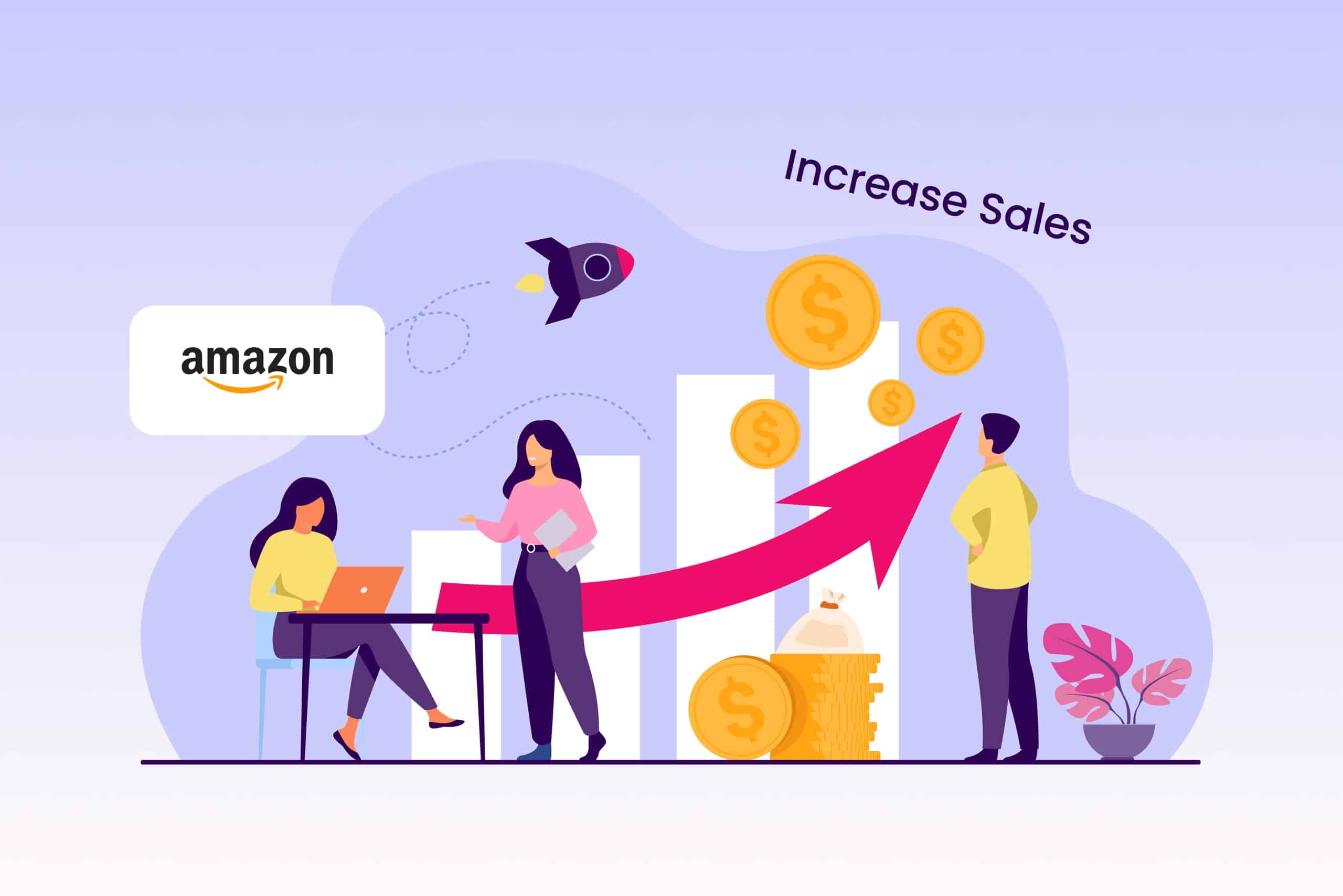Growing an eCommerce business into a sustainable and profitable operation can take some strategic savvy, especially for sellers trying to create and maintain market demand in a crowded space.
1. Optimize Product Listings
It doesn’t matter how amazing your products are if your listings aren’t communicating that to potential customers. Optimizing listings is a key way to stand out from the competition, showcasing why your products are worth buying over others on the market. This can be done in a few different ways:
- Search engine optimization: SEO refers to everything from writing engaging content to properly managing keywords throughout descriptions and backend keywords.
- Use of rich media: Text only goes so far. Using videos, high-quality photos, and infographics can give shoppers the best insight possible into your products.
- A+ Content: While not an option for all sellers, A+ Content can be a great way to build out product detail pages. Showcase your brand, compare products to one another, and create a cohesive experience for shoppers.
2. Leverage Amazon Advertising
Amazon offers a wealth of sponsored advertising opportunities to increase Amazon sales, so optimizing advertising campaigns can be a great way to get eyes on your products. Consider these strategies while evaluating campaign structure.
- Sponsored Products Ads: Sponsored Products are those highlighted in pay-per-click ads based on target keywords set by Amazon or sellers. Sellers bid on keywords, paying a certain amount based on pre-set budgets for ads to appear in customer search results.
- Sponsored Brands: Sponsored Brands are similar to Sponsored Products but instead involve a brand placement, and selected products rather than targeted products.
- Sponsored Display: Display ads are customized ads designed by sellers that can incorporate a multimedia approach and are able to appear across Amazon’s many platforms, including on Amazon, Twitch, Fire tablets, etc. Rather than being linked to specific products, these ads feature a call to action and direct consumers to a pre-set landing page.
- DSP: Also known as the Amazon Demand Side Platform, this is an approach to programmatic advertising. This tool allows sellers to automatically purchase advertising based on extensive data collection for placement on and off Amazon, maximizing both spend and exposure.
3. Use Dynamic Pricing
Pricing on Amazon isn’t set-it-and-forget-it; strategy plays a big role in staying competitive. Pricing can influence everything from customer perception to Buy Box wins, so failing to keep up with the trends can mean losing out. You can handle this manually—a process that can be a significant burden for sellers with more than a handful of products—or by leveraging Amazon’s flexible pricing tools to automate the process.
With tools in place, whether Amazon’s or a true dynamic pricing approach through a third-party eCommerce platform like Trellis, your product pricing will automatically adjust based on things like seasonal trends, inventory availability, market saturation, and even important Amazon dates.
4. Utilize Amazon Promotions and Discounts
Not all customers are focused on saving money, but for those who are, promotions and discounts are a great way to draw attention away from similar products or sellers. Amazon provides a few ways for customers to save:
- Lightning Deals: Lightning Deals are promo opportunities in which a limited number of products are available for a lower price. For example, setting a Lightning Deal for the first ten buyers to purchase a particular item will create a scarcity savings mindset, communicating to a shopper that if they don’t buy now, they’ll lose out on a deal. Amazon displays this as a percentage “claimed”. It’s a frequent promotional tool used during events like Prime Day or Cyber 5.
- Subscribe & Save: If you sell products that may need to be periodically re-delivered, like laundry detergent or toilet paper, Subscribe & Save allows customers to sign up for a recurring subscription at a reduced price. This is more appealing for shoppers and can guarantee more (and recurring) sales for your business.
And, of course, there’s always the option to offer more standard coupons and discounts as you see fit.
5. Optimize for Amazon’s A9 Algorithm
Optimizing Amazon listings for Amazon’s A9 algorithm can be a beneficial way to drive sales to your products. Effectively the name for Amazon’s proprietary algorithm, this approach to generating results is dedicated to putting as many relevant products in front of a customer’s eyes as possible. While Amazon keeps the details of A9 under lock and key, there are a few elements strong sellers know and work to leverage:
- Strong keyword relevance, which refers to optimizing product detail pages by taking an educated approach to keyword creation and management, increases the odds of both paid and organic placement.
- Conversion rate, or the amount of views that turn into sales. A higher sales volume indicates that customers are connecting with your products, and that’s what Amazon wants to highlight.
- Customer reviews are a great way to demonstrate customer satisfaction and product strengths.
6. Expand Globally
On a global platform, there’s no reason to keep sales strategies local. While most US-based sellers default to staying domestic, this isn’t a requirement; Amazon in the EU and some Asian countries, like Japan, hold plenty of untapped potential for new sellers. If you choose to take a global approach, ensure your listings, whether built individually or uploaded using a listing software, are localized across each geographical area. This may mean switching up language, spelling, measurements, or tailoring descriptions to regional differences in product use or lifestyle.
This option may not be feasible for everyone, particularly smaller operations that would be hampered by higher shipping costs. For those able to expand, new markets can mean new customers.
7. Manage Inventory Effectively
No inventory on your shelves means no products available for customers to buy. Alternatively, many stale products eating up warehouse space can result in higher fees and eat into profitability.
To ensure you’re prepared to keep costs as low as possible on the stocking and shipping front, find the right balance between maximizing shelf space and preventing out-of-stock products. This might mean leveraging inventory management software or, for those who are overwhelmed by in-house options, enrolling in Amazon FBA to let Amazon’s fulfillment teams do the heavy lifting—both metaphorically and physically.
8. Pay Attention to Guarantee Claims
While shopping online is a preferred way to purchase for many customers, it can be harder to reach those who prefer to better hold and try a product before purchasing. However, with the right guarantee, you can increase shopper confidence.
Amazon handles this personally with the A-to-Z Guarantee, which covers both timely delivery and the overall condition of the items purchased. Shoppers can make claims, which are handled directly by Amazon, but ensure on your end that you are evaluating why claims are made and mitigating issues for future buyers.
9. Enhance Customer Service
No one likes the feeling of sending an email to a customer service void, never to be seen or heard from again. Unfortunately, this is the experience many shoppers have come to expect from unknown sellers.
Make customer service a priority to set yourself apart from unreliable brands that might cause shoppers to shy away. Use Amazon’s built-in features to help with this; ensure you are communicating with your customers regularly and consider creating internal documents to help support a well-rounded customer service experience.
10. Use Data Analytics
There’s no reason to fumble in the dark, hoping your strategies work when there are so many ways to track data in real-time. Amazon Seller Central offers plenty of tools to monitor KPIs like RoAS, ACoS, TACoS, conversion rate, click-through rate, and other metrics for sales trends and ad performance.
For example, leveraging Amazon’s search terms report can help you see the actual searches customers are making that are leading them to your products. With data available for up to 60 days, this information can help you optimize your product listings as well as guide keyword use in PPC ad campaigns.
11. Develop a Brand Strategy
Branding can make a huge difference in selling anywhere, both online and in brick-and-mortar stores. The colors, imagery, and brand positioning you select will all communicate to customers something about your target audience and the solutions you’re prepared to deliver.
If you’re building a brand from the bottom up or are working to rebrand to address marketplace challenges, it’s important to focus on the customer first.
- Who are you serving?
- What solutions are you offering?
- What images and colors communicate your ideal audience?
Once you identify where you want to go, you can take the first steps in building a quality brand that will impress customers and drive future sales.
12. Use External Traffic Sources
While most traffic to products on Amazon will come from within the site, this doesn’t have to be solely the case. Amazon has rules about linking to outside sources, but this isn’t true for driving traffic TO Amazon. Sellers are free to promote their Amazon store outside the platform. To drive additional traffic, consider promoting your Amazon listings via emails to your mailing list or with ads on social media.
13. Participate in Amazon Programs
Small-scale sellers may be content signing up for a seller account and going no further, but brands with growth goals should consider enrolling in Amazon programs like Prime and Launchpad.
Amazon Prime is one of the best-known services, guaranteeing two-day shipping to all customers subscribed to the service. Many shoppers will choose Prime products over all other options, so enrolling could be to your benefit.
Amazon Launchpad is a program dedicated to supporting innovative small businesses. This can translate to increased discoverability, improved presentation, and global reach. While current enrollment is on pause, this is likely to be only one of many similar opportunities to come for Amazon sellers.
14. Test and Iterate
The world of eCommerce is always changing, and you should be too. Successful pivoting doesn’t mean simply listing new products and seeing if customers like them; it means considering new strategies for things like advertising, product page copy, and promotions. Shifting strategies can seem a little scary, particularly when you’ve been generally happy with the status quo, but if things appear to be stagnating, this might be the kind of approach you need to see continued growth.
Start in a straightforward and controlled manner. For example, choose a new way to approach ad campaigns, tweak your process, and monitor results for a period of time. If you’re seeing progress in this time compared to prior approaches, you’ll know its worthwhile to move forward with further adjustments.
15. Focus on Your Customer
As a seller, you’re obviously honed in on your brand and everything associated—producing or ordering new products, adjusting advertising, and tracking profits—but unless your energy goes to your customers first and foremost, you’re unlikely to get anywhere fast. Rather than thinking about your own goals in how to increase sales on Amazon, flip your focus. Consider what shoppers need and what you can do to deliver.
Determine things like the pain points your products solve, how your brand can fill gaps in the market, and what you can offer customers that no one else can. These are the things that should be guiding your approach to advertising and marketing, because they’re what’s going to resonate with your customers the most.
Increase Amazon Sales with the Power of Trellis
Exploring how to increase sales on Amazon is key for many sellers; however, succeeding can be easier said than done. If you’re looking for the perfect partner to move your eCommerce operations forward on Amazon and beyond, Trellis can take your business to the next level. An AI-driven dashboard aimed at success through the 4Ps of eCommerce profitability, our platform is poised to help you exceed your goals. Start a free trial today!



